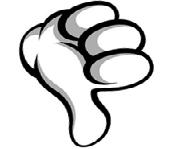Market Data

August 9, 2017
Letter to the Editor: Writer Sees Paradox in Steelmakers’ Stance
Written by Tim Triplett
Steel Market Update received the following letter to the editor which was in response to comments made in a recent article by an un-named steel mill executive:
I read your report “U.S. Steelmakers: We’re Not Protectionist” with interest, but also with a little bit of a smile. Since the mid-1960s, the U.S. steel industry has gone to Washington for help against imports. Several quota systems, voluntary restraint agreements, trigger price mechanisms and other measures have been negotiated to protect the U.S. steel industry and allow them to restructure to be able to better compete. And after all that, we’re still importing almost 25 percent of the steel needed in this country as semi-finished products such as slabs and billets. On top of that, they are coming from the same countries the U.S. steel industry accuses of illegally subsidizing.
The “executive from a major steel mill” quoted in the article noted that “we have the raw materials, we have the infrastructure, we have the talent, we have a mature industry” [to compete on a level playing field]. I don’t want to argue about the raw materials (although we import them) or the talent (although the engineering classes in our colleges and universities are over 90 percent foreigners), but I have my doubts regarding the infrastructure. Freight rates in the U.S. are extremely high. For customers in the Gulf and on the West Coast, the freight cost from the nearest domestic supplier is often higher than the ocean freight from Korea or Turkey.
In the 1950s and 1960s, the U.S. steel industry was second to none in the world. We had the best steelmaking facilities, the best rolling mills and there wasn’t a steel product that was not made right here in the USA. Look where we are now: We no longer have the best and most modern steelmaking facilities. Rolling mills are mostly imported, and some products are only produced by one mill. According to a report in SMU, there is a shortage of electrodes used in EAF mills. Although basically all new steel production in the USA has been in EAF, the majority of the electrodes are produced overseas. Why not in the U.S.?
–Anonymous SMU Reader
Editor’s note: Have a strong opinion about something you’ve read in Steel Market Update? We welcome and encourage letters to the editor and the free exchange of ideas. We prefer that letters be signed, but will publish comments anonymously in the event expressing an unpopular opinion might have repercussions for the author. Just email your views to John@SteelMarketUpdate.com.






